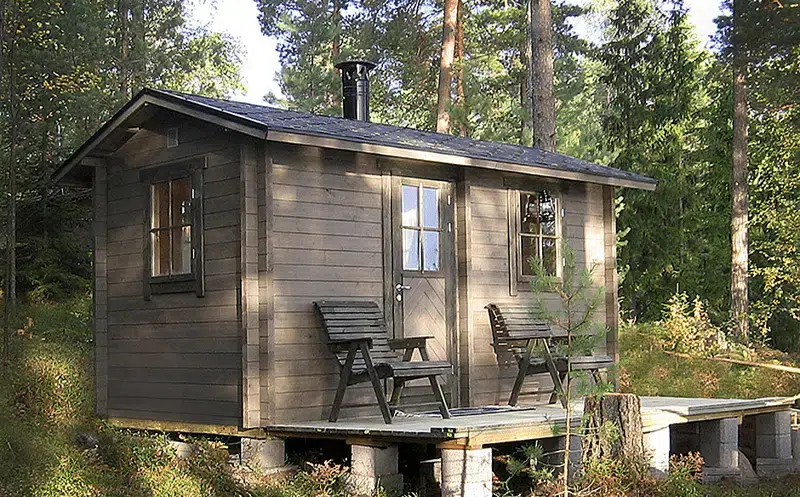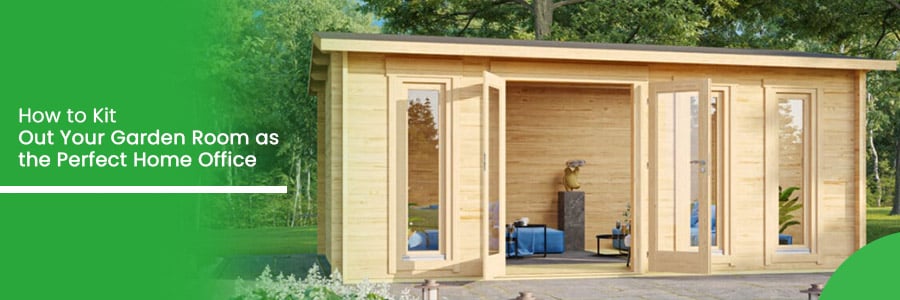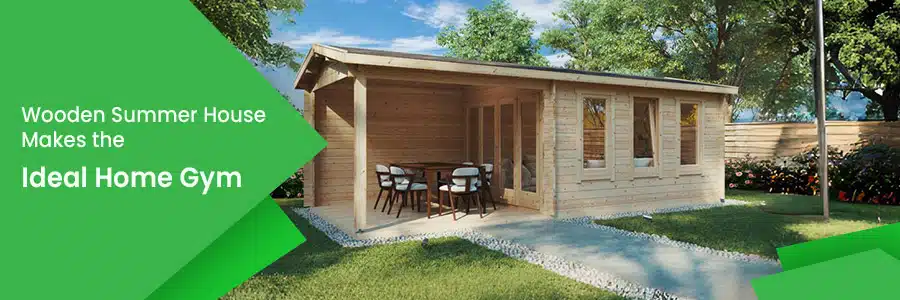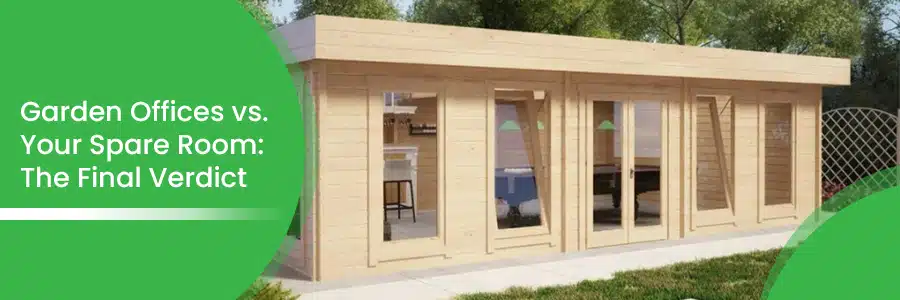7 Common Foundation Mistakes to Avoid When Building Garden Log Cabins
25.03.2022
The foundation is the most important part of building a sturdy structure. The main purpose of the foundation is to hold your garden log cabin up. Without it, the whole cabin might sink into the ground unevenly and it might be severely damaged. A good foundation should provide support and should protect the entire building from a wide range of issues including earthquakes and floods. You can’t build a sturdy log cabin on a weak foundation and building a strong foundation is a complex process that requires more than just pouring concrete.
Most types of log cabins require a foundation and there are a few different types of foundations that you can choose such as concrete slabs and pads. But regardless of what type of foundation you choose, there are a few common mistakes that you should avoid as much as possible.
Let’s take a look at a few easy-to-avoid mistakes that people make when building garden log cabins foundations.
Mistake #1: Underestimating the Importance of The Foundation
As mentioned above, the foundation is a very important step of the building project, and it’s important not to underestimate it. It is highly recommended to formulate a separate project for the foundation and to invest some time and effort into it. Before you start working on the foundation, several important details need to be considered such as electrical outlets, plumbing, drainage, ventilation, and heating. All of these details need to be thought out from the very beginning because they are related to the base. The builders need to have all of this info and they expect you to know all the details before they start pouring the concrete. Working with a structural engineer is a great idea and it might save you a lot of time and effort. By hiring a professional, you ensure that your foundation is laid flawlessly.
Mistake #2: Thinking That All Foundations are The Same
Copying a standard foundation project or asking your neighbour to tell you how they did it is a bad idea. Each foundation is unique due to several environmental and technical factors. For example, when building the base, the soil plays a crucial part. The soil in your garden might be different from your neighbour’s and this will impact the whole project. So, it is important to remember that your foundation will not be and should not be identical to another foundation and that you need to have an individual project. A poorly planned foundation might shorten the lifespan of your garden log cabin.
Mistake #3: Overlooking the soil
The soil is a very important factor that shouldn’t be overlooked. Before laying the foundation, the soil needs to be prepared and compacted. This will prevent it from behaving unpredictably. Soil that wasn’t properly compacted can shift when it gets wet, thus, damaging the whole building. The weather has a strong impact on the soil and, as you might already know, the soil can freeze during winter. Too much moisture in the air can also prevent you from laying a good concrete slab, which is why experts recommend pouring the foundation on warm days when there is no risk of rain.
Mistake #4: Letting The Concrete Get Too Cold
As mentioned above, the best time to pour concrete is when the weather is nice and is expected to remain like that for at least a few days. But, we can’t control the weather and plans can go awry if the weather changes suddenly. So, if that happens, it is important to keep the concrete warm. You can do so with concrete insulating blankets or old blankets that you don’t need anymore. When is it too cold for concrete? When temperatures drop below 5°C (40°F). The ideal temperatures for pouring concrete are between 10°C and 15°C (50°F and 60°F).
Mistake #5: Not Moisturising The Concrete
A common mistake that people make when pouring concrete is letting it cure too fast. This can be avoided by moisturizing the concrete regularly while it cures. If the concrete dries out too fast, it can become brittle and within time, it will crack. Concrete that dries very fast can even crack before you get the log cabin installed. If you notice cracks, it’s best to fix them sooner rather than later.
Cracks are a builder’s worst enemy as they allow water to infiltrate and the structure will become weak quite fast. Cracks in foundations are also a breeding ground for fungi and mould and can even cause health problems. Therefore, it is very important to hose down the fresh concrete five to ten times a day for about a week. This process is known as moist curing and it prevents concrete from drying too fast and cracking.
Mistake #6: Building a Shallow Foundation
We know that saving money is always tempting, but it is not a good idea to save on the foundation. If the walls of your foundation are not deep enough, the base of your log cabin is likely to sink over time. When that happens, the whole integrity and strength of the cabin are affected. Fixing this mistake will be much more expensive than doing the right thing from the very beginning.
Mistake #7: Not Waterproofing The Foundation
The number one cause for foundation problems is usually water infiltration. To protect your log cabin base from moisture, it’s important to waterproof it. Most foundations are made of concrete or cement which are very durable materials, but also happen to have pores. These pores can absorb water that will freeze when temperatures drop. And, as you already know, frozen water expands and this can lead to severe damage. Even if you live in a warm climate, moisture can still affect your base over time. So, waterproofing is a step that you shouldn’t ever skip.
There are two different concepts that can be a bit confusing: waterproofing and damp proofing. Being able to tell them apart is quite important. Waterproofing focuses on preventing rainwater and other sources of water from infiltrating. Damp proofing consists of preventing water from the soil to be absorbed by the foundation. So, when building a garden log cabin base, it’s good to consider both. In addition to that, you might also require foundation vents that allow the air to move freely and to dry up the excess moisture.
In Conclusion
Log cabins are very sturdy and durable when built on a sturdy foundation. If you are doing some research on garden log cabins, make sure you do some research on foundations as well. Experts recommend being extra careful when building the foundation and preventing all the issues, rather than trying to fix them later. A good foundation will increase the lifespan of your garden log cabin, so don’t skip any steps.
Not sure how to build a base for your garden log cabin? The Summerhouse24 assembly team can take care of the base, installation, insulation as well as certified electrical works. If you have any questions about garden log cabins bases and foundations, do not hesitate to contact us!
Categories:
BlogWant to discuss over phone. Let us call back to you
If you need any additional info regarding any product, please fill in the below form and we will get back to you, usually the same or next working day.
Have any questions regarding some product?
If you need any additional info regarding any product, please send us your questions.





